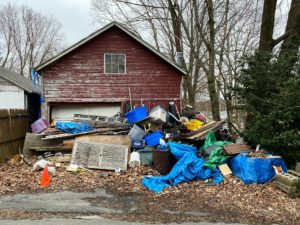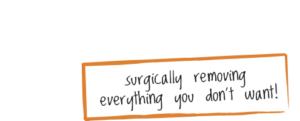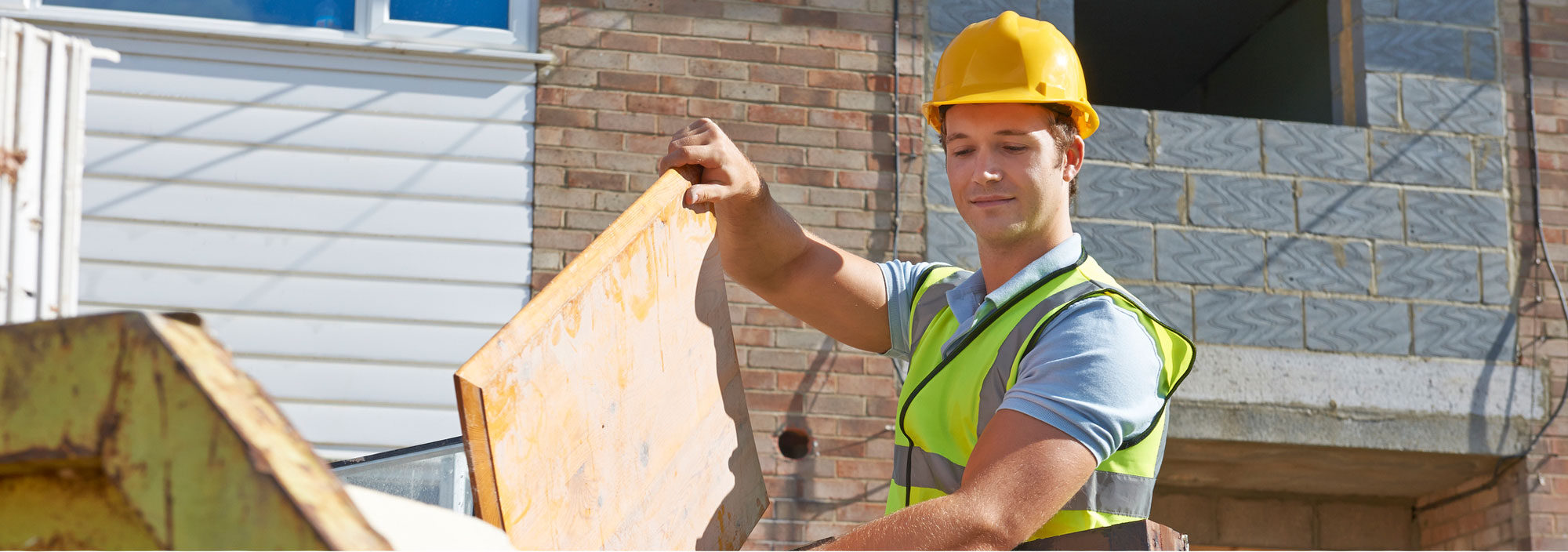How to Manage Flood-Damaged Items: Removal and Disposal

Dealing with the aftermath of a flood in your home can be overwhelming. As water recedes, it leaves behind a mess that can quickly become hazardous if not addressed promptly. Rapidly removing flood-damaged items is not just about tidying up; it’s a critical step in safeguarding the health of your living environment and preventing further damage to your property.
Firstly, understanding the risks associated with water-damaged items is essential. Floodwaters can contaminate everything they touch, turning ordinary household items into potential health hazards. Prompt removal and appropriate handling of these items are crucial to avoid the growth of mold, which can begin in as little as 24 to 48 hours after exposure to moisture. Furthermore, floodwaters may contain harmful bacteria and chemicals that require careful handling.
We take a responsible approach to flood-damaged junk removal, focusing on efficient, safe, and environmentally friendly methods. Starting with identifying which items can be salvaged and which should be disposed of, we ensure that every piece of damaged property is managed appropriately. Adapting quick removal strategies not only clears the space for restoration and repair work but also significantly mitigates potential health risks.
Understanding the Risks: Why Quick Removal of Flood-Damaged Items is Crucial
When dealing with the aftermath of a flood, quick action is not only practical but crucial for health and safety. Floodwaters are notoriously contaminated, carrying mud, bacteria, and various hazardous chemicals. These contaminants can infiltrate textiles, carpets, and upholstery, as well as seep into cracks and crevices of furniture and electronic equipment, fostering an environment ripe for mold and mildew growth. If these items are not removed swiftly, mold can begin to grow within 24 hours, posing serious health risks.
Beyond health concerns, the structural integrity of your belongings can also be severely compromised by water damage. Swelling, warping, and staining of furniture can occur swiftly, and once these damages set in, restoration becomes much more difficult and costly. We prioritize rapid response to lessen these damages, ensuring that your space is cleared quickly and safely, setting the stage for successful restoration and reducing long-term impacts on your home.
Identifying Salvageable vs. Non-Salvageable Items After a Flood
Identifying which items can be saved and which should be disposed of is a critical step in the flood recovery process. We approach this task with a keen understanding of what can realistically be restored and what cannot. Generally, non-porous materials such as plastics and metals can often be cleaned and saved. These items are less likely to absorb floodwaters, making them easier to restore to their pre-flood conditions.
On the other hand, porous materials like fabric, wood, and paper usually absorb water quickly and are often breeding grounds for mold and bacteria. For these items, we assess the extent of the damage. If an item has been soaked for more than 48 hours, it will likely need to be thrown out to prevent mold growth. Electronics, despite being non-porous, often fall into the non-salvageable category due to their sensitivity to water damage. We handle each item with care, determining its potential for recovery or safe disposal, always keeping your safety and the environment in mind.
Step-by-Step Guide to Safely Dispose of Non-Salvageable Flood-Damaged Goods
Once we identify items as non-salvageable, it’s essential to dispose of them safely to prevent any health risks and minimize environmental impact. We start by securing the appropriate disposal bags and containers to prevent leaks or spills during transport. These materials are handled with care, wearing protective gear such as gloves and masks to avoid direct contact with any contaminants. All items are then catalogued to ensure proper documentation, which is especially crucial for insurance claims and for tracking the disposal process.
Each item is transported to designated disposal sites that are equipped to handle flood-damaged refuse. We adhere strictly to local regulations concerning the disposal of such materials, ensuring that all steps taken are in compliance with municipal waste management standards. Our team takes great care to separate items according to their materials, as different elements like electronics and organic materials need specific disposal methods to minimize environmental harm.
Eco-Friendly Disposal Options for Flood-Damaged Items
When it comes to disposing of flood-damaged items, it’s not just about getting rid of unwanted stuff; it’s about doing it responsibly. We explore all possible eco-friendly disposal options, such as recycling centers that accept flood-damaged goods or specialized facilities that handle biohazard materials. We actively seek out and partner with green organizations that offer sustainable disposal solutions, ensuring that every item that can be recycled or repurposed is handled accordingly.
Moreover, we educate homeowners on the importance of reducing waste and choosing sustainable options whenever available. By making informed decisions about disposal, together we can significantly reduce the environmental footprint of the cleanup process. This commitment to eco-friendly practices is not just part of our service—it’s a crucial aspect of our responsibility to the community and the planet.
Conclusion
Managing the aftermath of a flood involves more than just drying out and replacing damaged items. It involves a thoughtful approach to what is salvaged and what is responsibly disposed of. With our expertise, we ensure that every step from identification to disposal is handled with care, keeping both safety and sustainability at the forefront. If your home has been affected by a flood, remember that quick action is crucial, and choosing the right partner for your cleanup and disposal needs can make all the difference.
For efficient, responsible junk removal in Ottawa and eco-friendly disposal, trust Dr. Waste to handle your flood-damaged items with care. Contact us today to learn more about how we can help you in your post-flood recovery and cleanup efforts.

